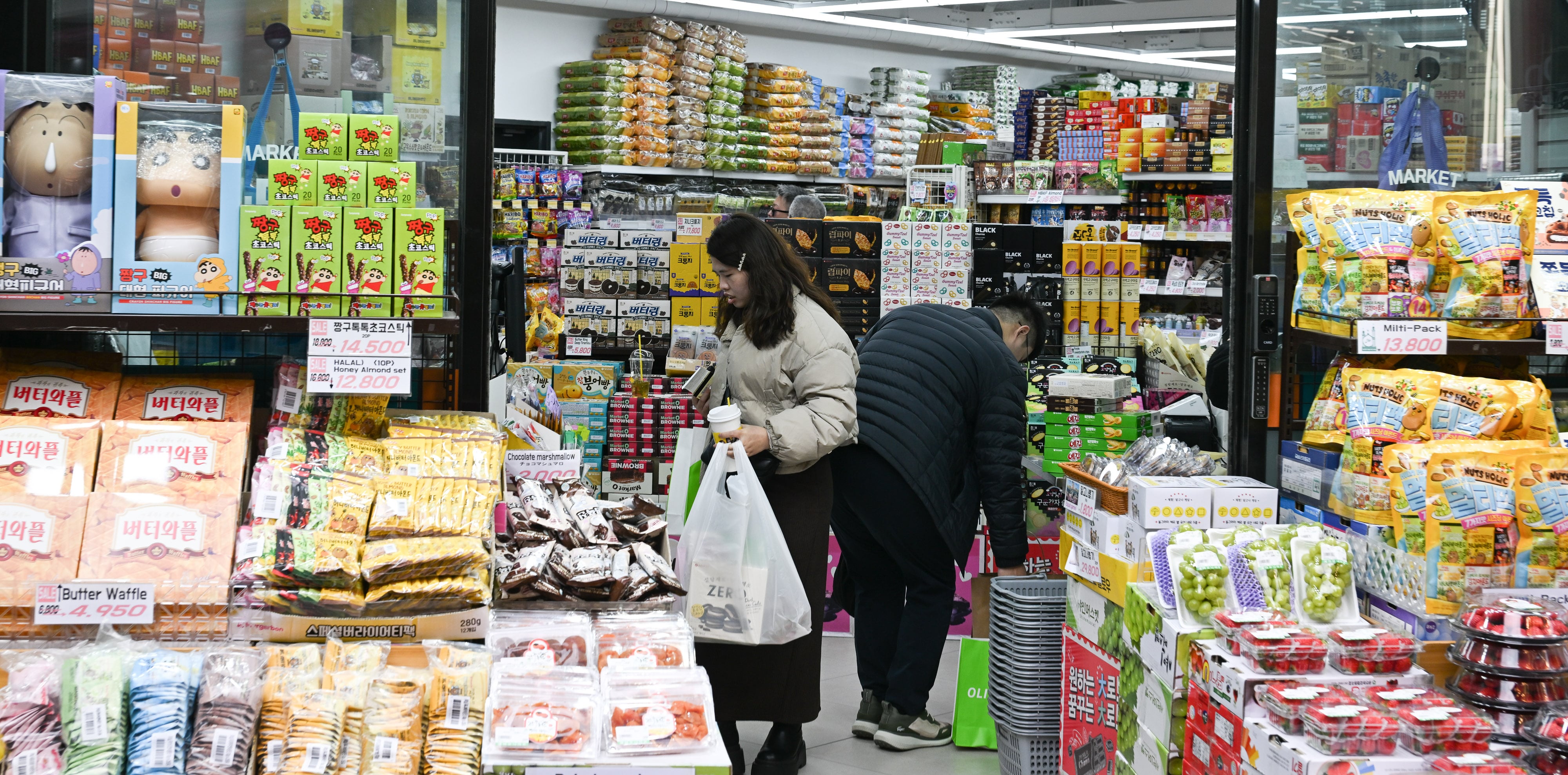
Previously famous for fashion and makeup, Myeong-dong is evolving into a hub for K-food, with the increasing international demand for Korean snacks and street cuisine altering the area’s business environment.
Supermarkets packed with local treats and eateries serving classic Korean comfort foods are now filling the spaces once occupied by clothing stores and beauty shops.
An excellent illustration of this change can be seen in a narrow passageway located between the Daiso’s Myeong-dong Station outlet and Olive Young’s Myeong-dong Town location. This pathway, which extends approximately 340 meters, has been transformed into a hub featuring four shops focused on Korean snack foods, two retailers exclusively selling seasoned almonds, as well as trendy street food vendors serving up tteokbokki buffet options and gimbap delights.
Not long ago, these shops housed fashion boutiques and cosmetics stores—but now, they have transformed into a lively 'Korean food alley.'"
The growth of K-food is transforming Myeong-dong’s commercial zone. Stores specializing in clothing, cafes, and sweet shops—which were once prevalent—are declining, whereas supermarkets offering Korean snacks and eateries serving authentic local cuisine are becoming more prominent.
This change mirrors evolving tourism patterns: big groups of international tourists, previously famous for purchasing substantial amounts of clothing and cosmetics, are being replaced by solo travelers, notably those who are younger, and these individuals have a stronger interest in sampling Korean snacks and regional dishes.
Based on the analysis conducted by the Seoul Metropolitan Government, the count of Korean eateries within the Myeong-dong special tourist district—which encompasses areas like Myeong-dong and Namdaemun Market—rose from 642 at the end of 2023 to 680 one year after, marking an addition of 38 venues, equivalent to a growth rate of 6%. Meanwhile, during this timeframe, the tally for specialized supermarkets focusing on K-food expanded from 152 to 175 outlets, representing an uptick of 15%.
In the meantime, cosmetic stores—which were once symbolic of Myeong-dong’s retail landscape—decreased from 418 to 402. The count for clothing shops fell from 3,013 to 2,935, whereas coffee shops saw a slight rise from 340 to 343. This change reflects Myeong-dong evolving from being known primarily as a center for fashion and beauty into what is now referred to as a "Korean food district."
Supermarkets in Myeong-dong catering to K-Food enthusiasts have turned into essential stops for international visitors. These outlets often showcase prominent signage with terms like "Korea" or simply the letter "K," setting them apart from typical grocery stores. Instead of offering perishable goods or poultry products, they specialize in an array of items including Korean delicacies, seasoned seaweed, and spiced nuts. A few also stock K-Pop memorabilia such as keyrings and fridge magnets.
"The change is happening because large Chinese tour groups—which were once a significant influence on Myeong-dong’s retail landscape—are now declining, while an increasing number of young independent travelers from the Millennial and Generation Z demographics are coming to South Korea accompanied by friends or family," according to a statement from a retail industry representative.
The Korea Culture and Tourism Institute reports that in 2023, 85% of international tourists visited as individuals, marking an increase of 9.4 percentage points since 2019, prior to the start of the coronavirus outbreak. During this timeframe, the proportion of those traveling in groups decreased by 6.7 percentage points.
The origins of the visitors are expanding past just China and Japan, with an increase in travelers hailing from Southeast Asia and the Middle East.
Posts by these travelers often highlight their trips to Myeong-dong, accompanied by comments such as "On a quest for genuine Korean items" and "Exploring cutting-edge Korean merchandise." A YouTube personality mentioned, "I visit the supermarkets in Myeong-dong to discover the newest Korean offerings not available in my home country just yet."
Consequently, prominent South Korean food corporations are intensifying their K-food promotional activities aimed at attracting foreign visitors to Myeong-dong. Local convenience stores have introduced display tables designed to resemble well-known instant noodles such as Buldak Bokkeum-myun (Buldak Ramen), Shin Ramyun, and Jin Ramyun.
In October, the food conglomerate Nongshim set up a "K-ramyun zone" within a Myeong-dong grocery store, allowing guests to prepare and enjoy Shin Ramyun, Neoguri, and various other instant noodle varieties on the shop’s upper level.
Stores like Olive Young and Daiso, which cater to international customers, are also increasing their offerings of food items at their outlets in Myeong-dong.
At the Olive Young’s Myeong-dong Town location, over 90 percent of sales originate from international shoppers. This store features an entire shelving unit brimming with exclusive snack items like Delight Project bagel chips, seaweed crackers, and traditional Korean yakgwa (honey cookies). Likewise, Daiso’s Myeong-dong Station outlet dedicates one out of its twelve levels exclusively to edible products, offering a range of snacks and pre-packaged foods for purchase.


No comments:
Post a Comment